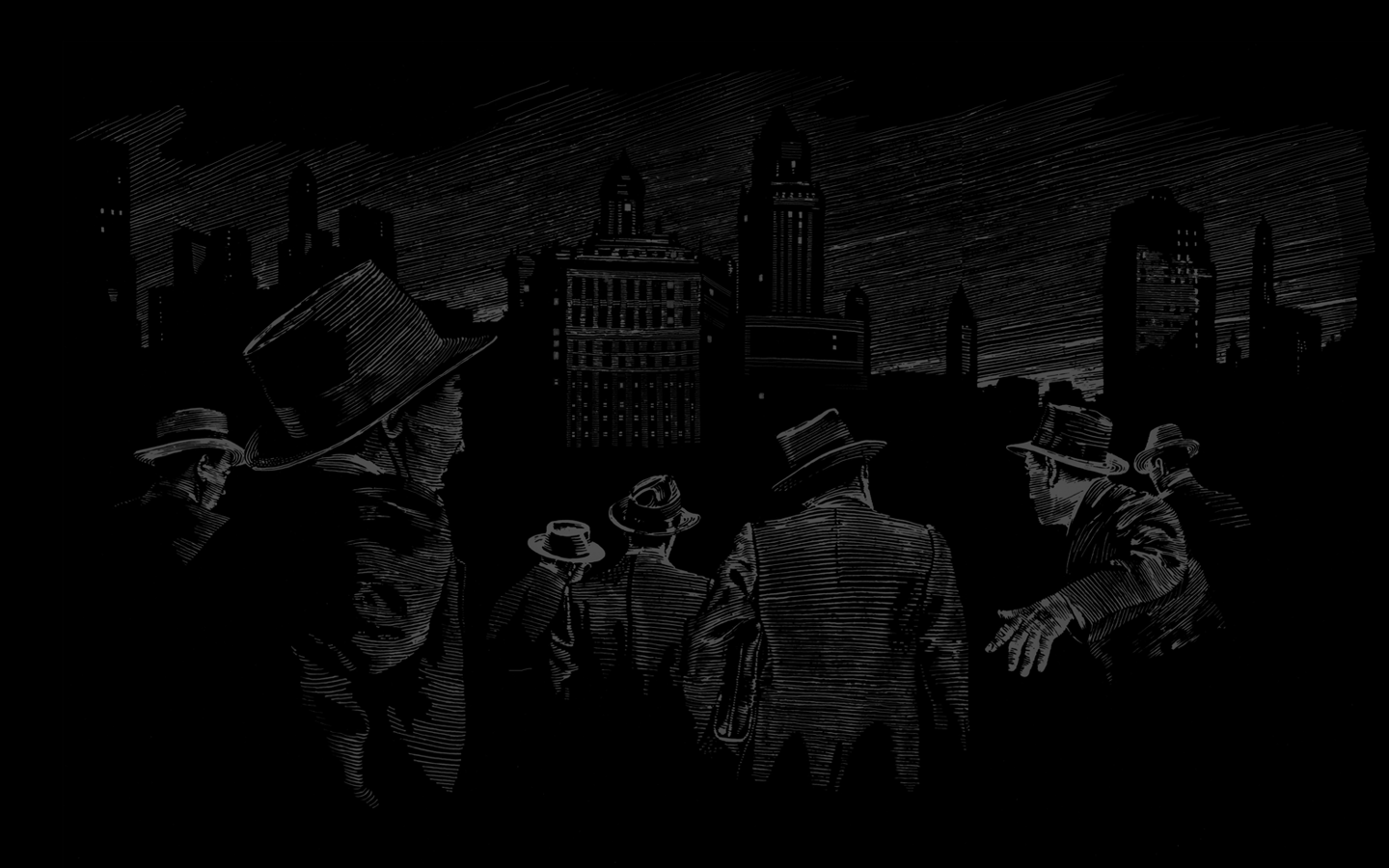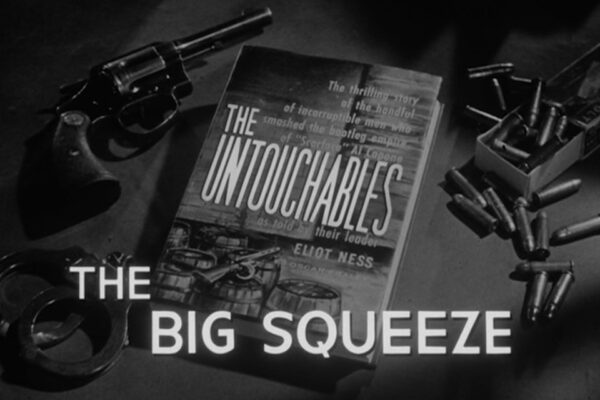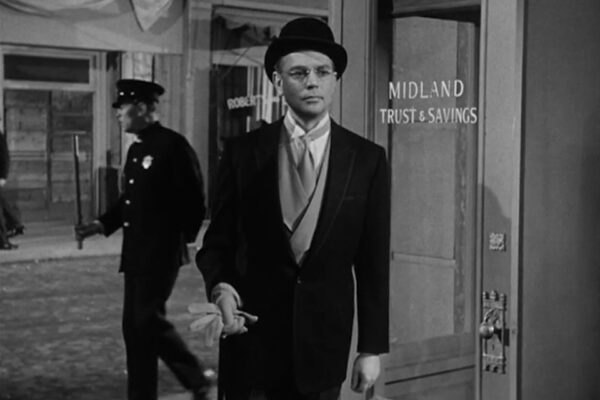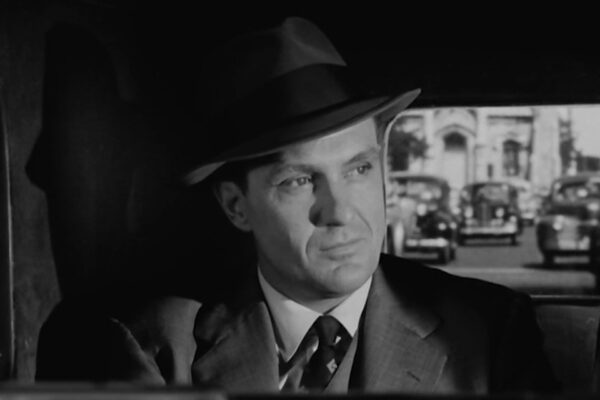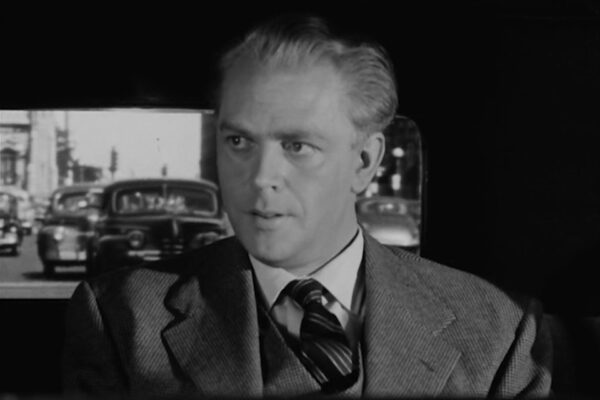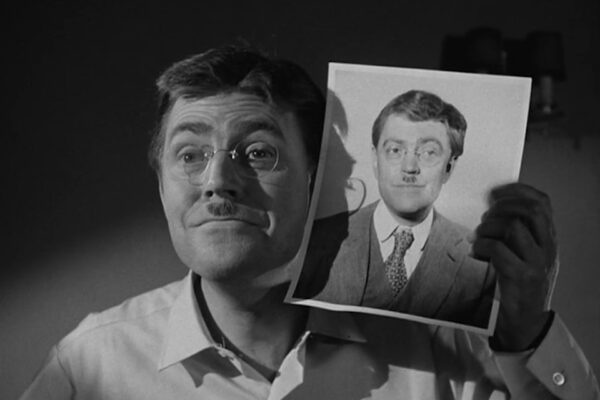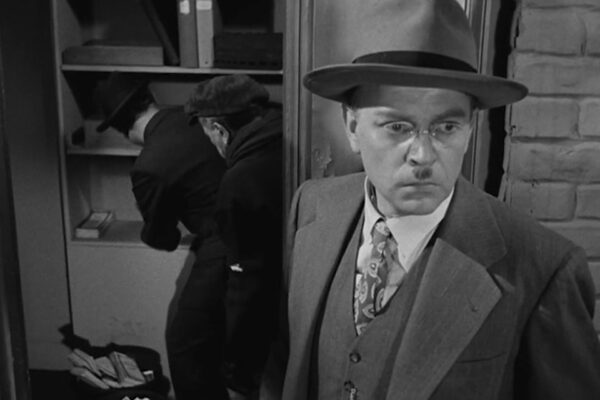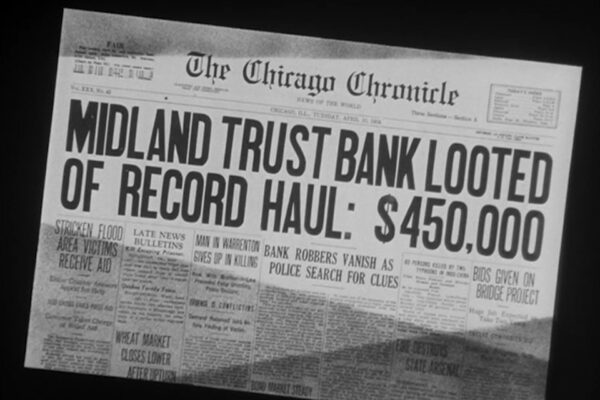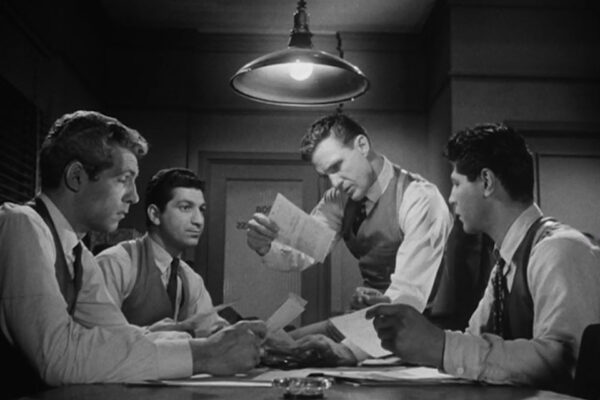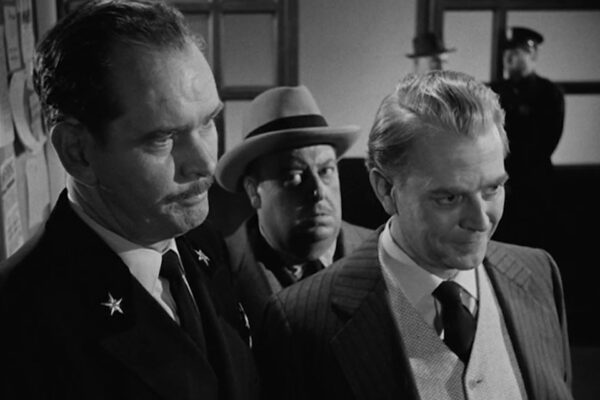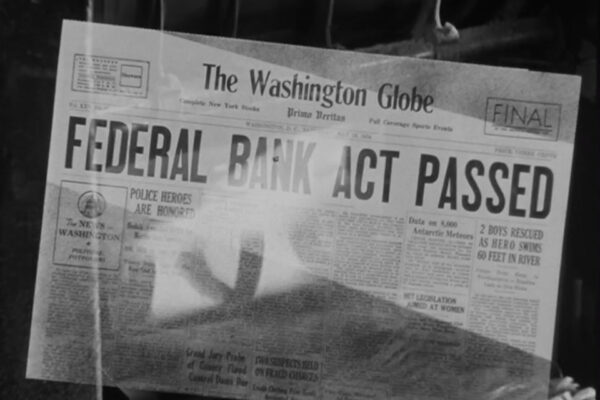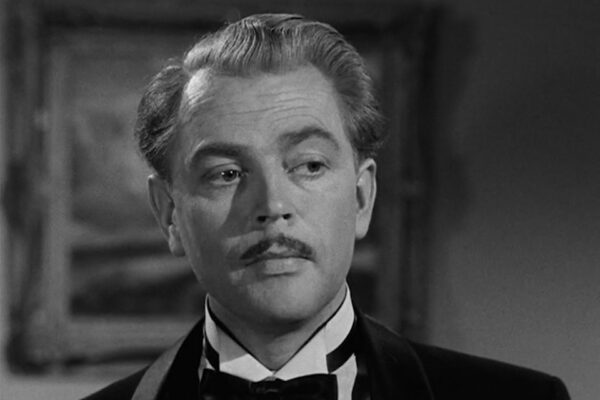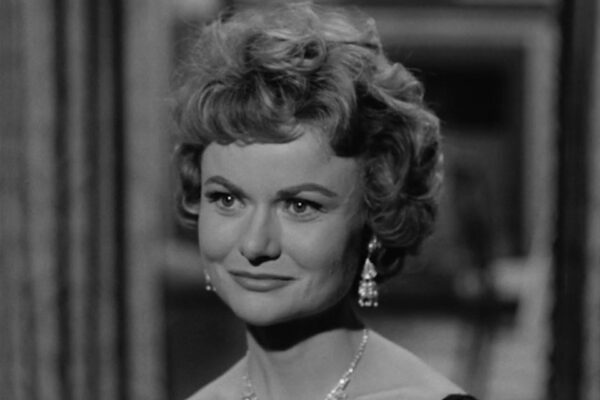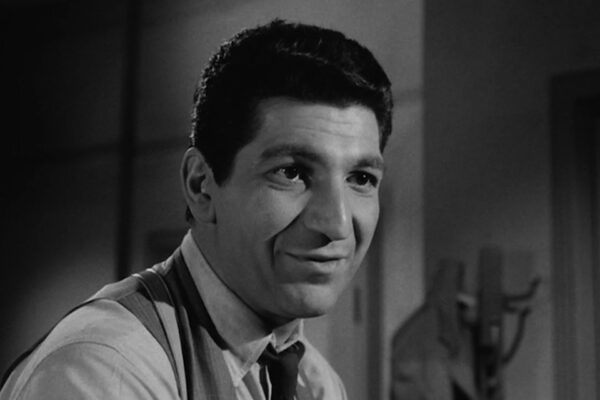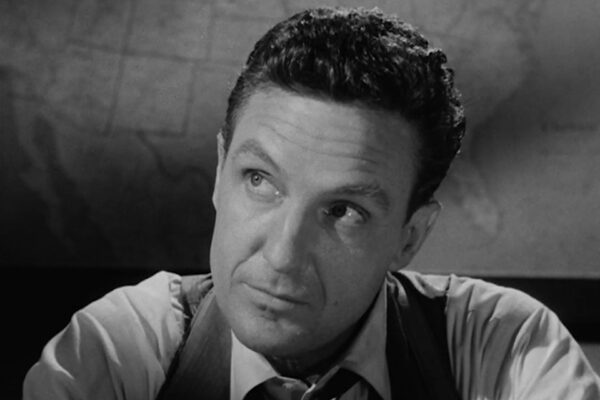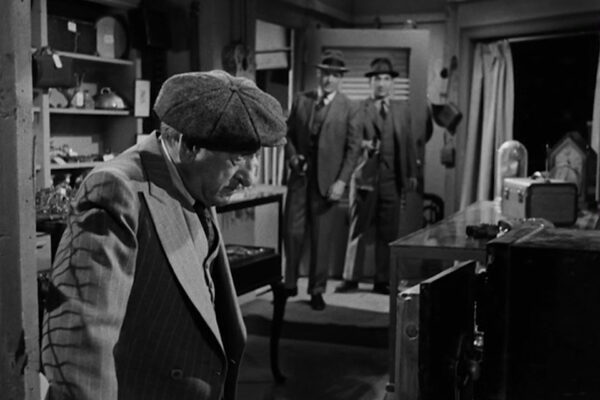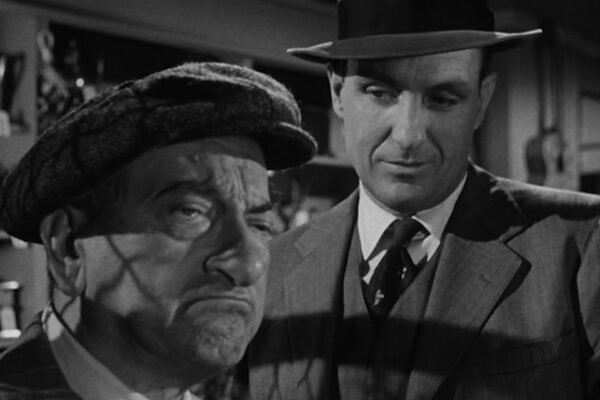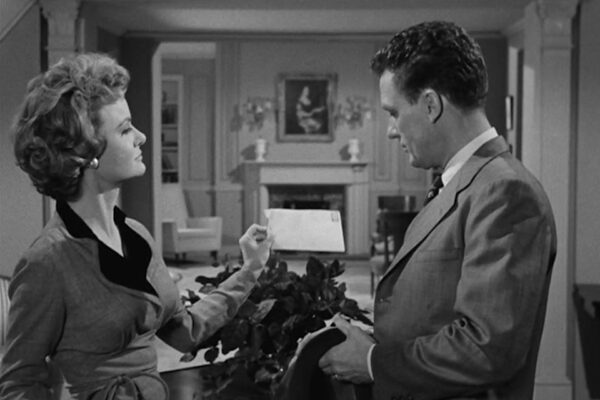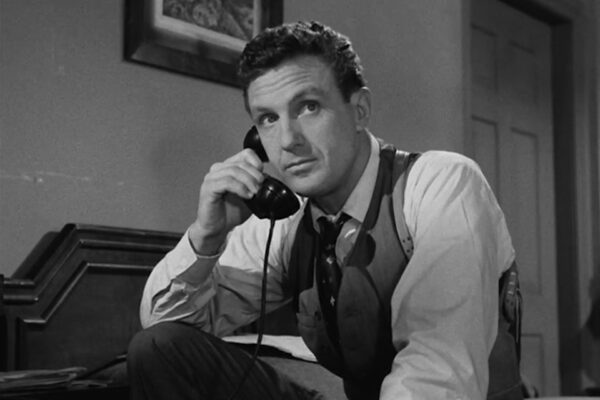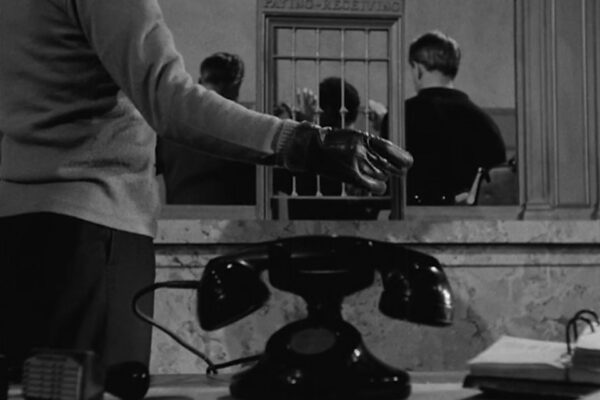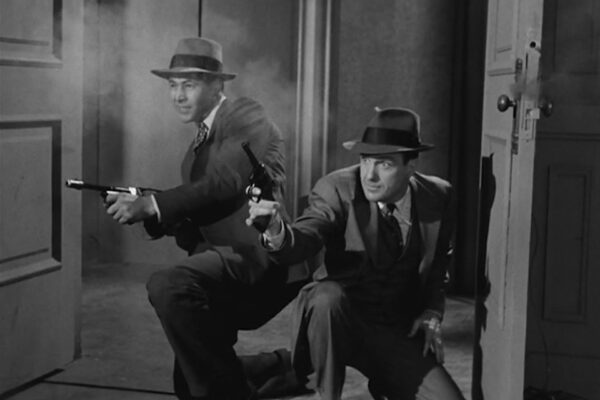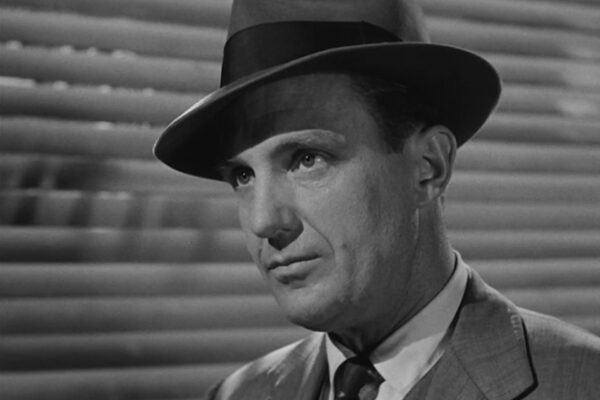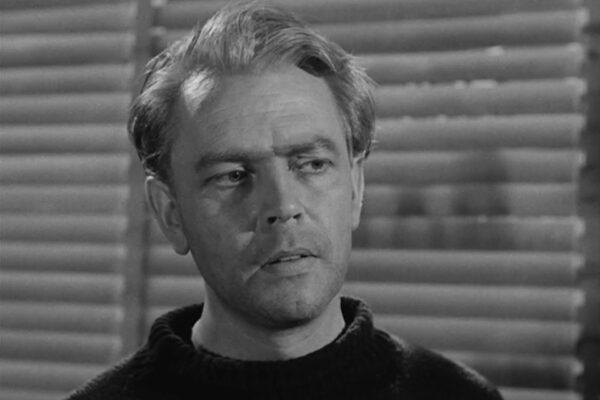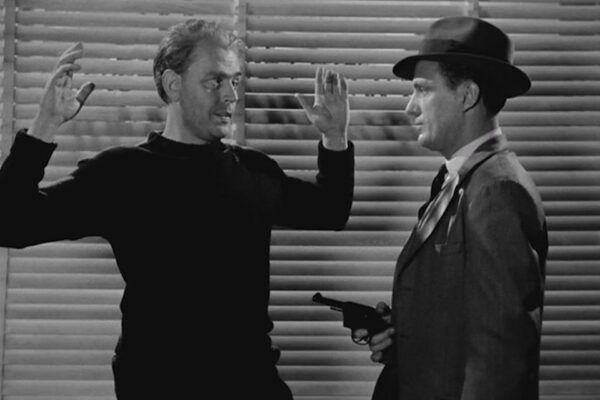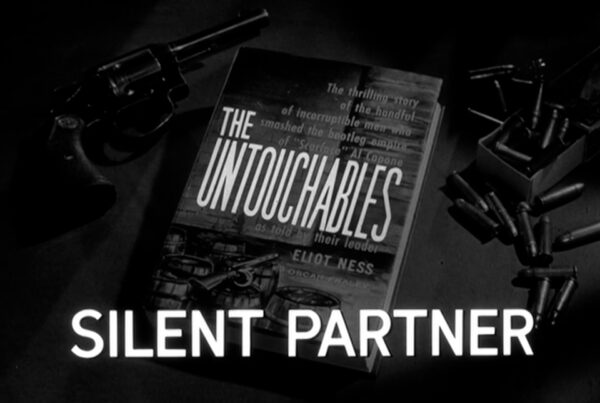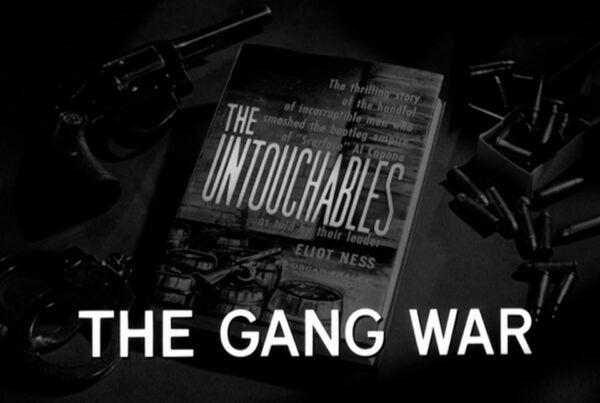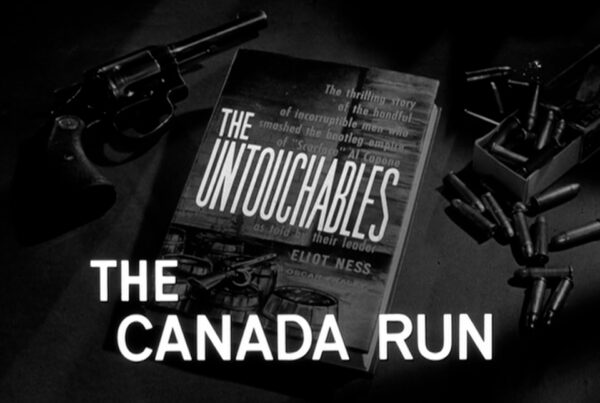THE BIG SQUEEZE
Airdates: February 18th, 1960 and July 7th, 1960
Teleplay by W. R. Burnett and Robert C. Dennis
Story by W.R. Burnett
Produced and Directed by Roger Kay
Director of Photography Robert B. Hauser
Special Guest Star Dan O’Herlihy
Co-starring John Hoyt, Dody Heath and Featuring James Mageean, Frank Wilcox, Jean Vaughn, William A. Forester, Steven Coit, Ed Hashim, Pitt Herbert
“Prior to May 1934, robbing state banks was not a federal offense. Bandits had only local police to contend with, and these were frequently understaffed, inefficient or corrupt. With all the odds in favor of the hoods, there was a rash of successful though clumsily executed bank robberies carried out with complete disregard for human life. But, in addition to these rip and tear robbers, there were many experts of an older school, like the men who silently looted the Farmers and Drovers Bank of Kansas City, of $150,000, and left the small change behind for the muscle men. In Chicago, March 7th, 1934, a meeting took place in the office of Beecher Asbury, the federal district attorney.”
Eliot Ness is assigned to investigate gentleman bank robber Larry “Ace” Banner (Dan O’Herlihy), who has taken up residence in Chicago. Asbury hopes that Ness’s investigation will encourage the government to make bank robbery a federal crime.
Ness arranges to share a taxi with Banner to meet his new adversary up close. Squaring off like two contestants before the match, Banner suggests that in the end, the smartest man may outsmart himself. Ness predicts that Banner will do precisely that.
While under surveillance, Banner sets up the robbery of the Midland Trust Bank in Chicago, with the reluctant help of its president James Havens (John Hoyt), who has been quietly looting the institution to cover his gambling losses. Aided by Haven’s inside information and Banner’s convincing impersonation of the head teller, the robbers arrive before the bank opens and gain entry.
Conducting an unofficial investigation, Ness questions the Bank’s president, but Havens’ evasiveness arouses Ness’s suspicion. Before Ness can close in, Banner sends his right-hand man, Jamie “The Knife” (James Mageean), to do Havens in.
When the Federal Bank Robbery Act becomes law, Banner retires to Florida, but not before placing Jamie in charge of his fortune. Living the good life, Banner meets and subsequently marries one Chicky Purcell. When he attempts to reign her in, she abruptly leaves him. Running low on funds, Banner contacts Jamie, who then inadvertently leads Ness to Banner’s cash horde. Faced with the prospect of having to return to his former line of work, Banner abruptly disappears.
Frustrated, Ness attempts to question Chicky, whom he finds in Chicago. She is startled and intrigued to learn that the man she married, James Spencer, is really Ace Banner, but refuses to cooperate. Using the postmark on a letter Chicky had brandished during their encounter, Ness moves his team to Pennsylvania to lie in wait for Banner to pull another job. After weeks of surveillance and clever guesses, Ness finds one particular bank ripe for the plucking. Pouncing at just the right moment, Ness captures Banner and his men in the act.
“Eliot Ness had made his prediction come true. Larry Banner had finally outsmarted himself. On July 14th, 1936, Banner was sentenced by a federal judge. Today, he is still in jail, doing ninety-nine years.”
REVIEW

Crime-drama scribe William Riley Burnett stops by Desilu’s Chicago to pen an Eliot Ness adventure.
The Big Squeeze is elegantly written, singular in its charm and relatively low on violence. Novelist William Riley “W.R.” Burnett, who often collaborated with series writer Ben Maddow, put all the bank robber legends he could find into this splendid hour, one of the series’ finest and most unique moments. Burnett spent his formative years cavorting with undesirables in Chicago as a low-rent hotel clerk, and used those experiences to coin dialogue for 1931’s Little Ceaser, write 1932’s Scarface and contribute a handful of other crime dramas to film noir legend.
Dan O’Herlihy is clearly the lead, but James Mageean’s Jamie “The Knife” is one of the most curious characters ever to visit the series with his rich Irish accent and elfishly wicked, Jimmy Durante-like appearance.
In a takeoff on Jules Dassin’s Rififi (1955), very nearly the entire second segment is devoted to an absorbing bank robbery taking place in virtual silence. This scene and the briefing scene before it are particularly well-staged and feels as though it were filmed in 1934 rather than 1960, which seems fitting given the screenwriter’s origins.

Did screenwriter Burnett know a real life Jamie “The Knife?”
While the act-break when Banner seemingly “retires” is scored to a piece of music typically used to conclude an episode, the shift in pacing brings us one of the series’ only visual sight gags, where Chicky runs out of the background as Winchell narrates: “Chicky Purcell’s interest in Larry Banner extended no further than his bankroll. When the money vanished, so did Chicky.”

A minuscule but appreciable detail: the model of telephone subtly denotes that this is a mid-1930s entry in the Untouchables canon.
Additionally, Winchell’s closing narration is particularly enjoyable for two reasons: it coyly suggests Banner was indeed a real-life criminal and discloses that he’s still serving jail-time at the airing of the episode. Beyond the future disclaimers slapped onto the end credits to proclaim that the show is fiction, this is the closest Winchell ever gets to breaking the fourth wall.
The Big Squeeze feels a lot like a First Season episode but exactly doesn’t suffer like one. Though the episode spans months, Stack’s Ness is notably more engaged, youthful even, as he plays chess with Banner. While some of the action is awkwardly staged (especially Ness and Youngfellow’s break into the middle of the bank robbery, only to arrest Banner in a room behind them?) the robberies are well-orchestrated. Rossi takes center stage over a totally absent Flaherty or Allison, who are neither mentioned nor featured and in their stead, two pieces of background extras are used as Federal Agent furniture. It’s this fact that makes one wonder if it wasn’t produced earlier in the queue amid casting changes and aired out of sequence.
Three clues suggest offer insight: Among cinematographer Robert Hauser’s credits in the First Season are Star Witness and The St. Louis Story, which aired back to back, and director Roger Kay’s contributions are all early-season episodes, with this one being his strongest. Despite Allison’s absence from the episode, his name still appears in the credits.
It’s likely the airing of this episode used to buy some extra time while the production focused on the grueling schedule for the upcoming two-part epic, The Unhired Assassin.
The time and effort would be well worth it.
QUOTES
BANNER: Imagine, the nemesis of Al Capone and all those terrible gangsters. I’m deeply flattered, Mr. Ness.
NESS: Banner you seem to think there’s some distinction between you and men like Capone. There isn’t. Guild it all you like, inside you’re all the same: Thieves.
BANNER: The difference between this thief and people like you is brains. You sweat your life away in a $20 suit and I pay that much for a monogram on my shirt pocket. You think you’re smart, Mr. Ness. The smartest man in the end outsmarts himself.
NESS: You know, that’s just what I’m counting on.
OBSERVATIONS
• The stock footage from early period-gangster films includes footage filmed outside Paramount Pictures as it doubles for an electric company.
• There are a handful of cross-dissolves used in the editing for this episode. Beyond the Venetian blind dissolves used during commercial bumpers and page turns transitions in the opening credits, these types of dissolves were used rarely, especially in opening teaser segments.
• In a nod to the year this episode takes place, the propmaster has seen fit to use a variety of mid-1930s model telephones, a departure from the late 20s and early 30s models (like the traditional Western Electric 50AL candlestick model.)
• While the propmaster was paying attention, the rear projection footage of the Chicago street scene shows cars from 1940s. Can’t win ’em all.
• Ness rarely wears anything other than his grey suit, but in formal settings like his Washington meeting, his wardrobe is black.
• The presence of Beecher Asbury is always welcome.
HISTORICAL NOTES
• Banner’s final hold-up is in a town called “Petroleum City, Pennsylvania,” potentially a stand-in for Oil City or Petroleum Center, Pennsylvania.


